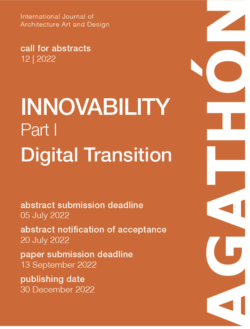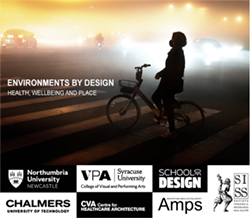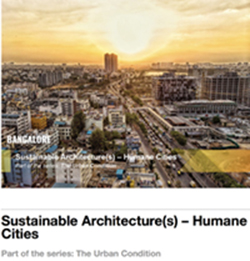ISSN (online): 2412-3811
Call of the Journal:
- Advances in the Management and Application of Construction and Demolition Waste
- Agricultural Infrastructure
- Application of Artificial Intelligence to Model the Behavior of Infrastructure
- Application of Machine Learning and Artificial Intelligence in NDE and Structural Health Monitoring of Civil Infrastructures
- Big Data Analysis and Visualization in Transport Infrastructure | Challenges for Operations, Control, and Planning
- Critical Infrastructure Resilience Facing Extreme Weather Events
- Designing and Managing the Next Generation of Transportation Infrastructure
- Durability of Concrete Infrastructure
- Innovative Practices into Road Pavement Maintenance Management
- Inspection, Assessment and Retrofit of Transport Infrastructure
- Neural Networks in Land Transport, Vehicle and Railway Engineering
- Non-destructive Testing and Evaluation for Civil Infrastructures
- Pavement Management | Inspection and Life-Cycle Assessment
- Pedestrian and Bicycle Mobility in the Future Cities of the World | Between Adapting Infrastructure and Changing Behavior
- Rail Infrastructures
- Reliability and Durability of Pipelines
- Remote Sensing and Infrastructure Information Models | Methods, Applications and Smart Management of Infrastructure Data
- Research and Developments in Pavements
- Resilient and Smart Transport Infrastructure for Connected and Autonomous Vehicles
- Reusing, Recycling and Repurposing Infrastructure | Components and Construction Materials
- Road and Rail Infrastructures
- Seismic Reliability Assessment and Advances in Structural Modelling
- Selected Papers from the 8th Civil Structural Health Monitoring Workshop
- Smart Infrastructures
- Smart Materials for Sustainable Infrastructures
- Smart, Sustainable and Resilient Infrastructures
- Structural Assessment and Health Monitoring of Infrastructures
- Structural Health Monitoring of Civil Infrastructures
- Structural Performances of Bridges
- Sustainability of Building Materials and Structures
- Sustainability of Concrete Infrastructures | New Applications, Monitoring and Retrofitting
- Ultra-High Performance Concrete (UHPC)
- Underground Infrastructure Engineering
Mar
2021
Apr
2021
The commitment to achieving total efficiency and effectiveness for road pavement networks throughout their service life has encouraged scholars around the world to continuously take on challenges linked to the development of new technologies and innovative materials to devise solutions which are more environmentally friendly and sustainable. Common road maintenance practice involves milling the existing old pavement layers; thus, cold and hot asphalt recycling has become one of the most widespread technologies for road pavement maintenance, as it minimizes the financial and environmental impacts while guaranteeing high performance. In addition, reusing wastes deriving from industrial manufacturing processes and construction activities into the replacement of virgin aggregates, as well as the production of specific polymeric compounds to be used as modifiers of the neat bitumen and/or bituminous mixtures, can play a central role in attaining a reduction of natural resource use and meeting other fundamental targets focused on climate change minimization without compromising the mechanical performance and durability of road pavements. Several methodologies have been investigated in recent years to test the effectiveness of the solutions, ranging from sophisticated-advanced laboratory tests to complex numerical data analysis. It is well known that the volumetric and mechanical properties of asphalt mixes for road pavements’ upper layers should be integrated throughproper life cycle assessment from cradle to grave to decide whether a) a limited exploitation of natural resources has been properly taken into account, b) a greater productivity of the entire process can be reached, c) the durability of the layers would be negatively affected by innovative construction solutions, d) energy efficiency has been properly pursued, and e) reductions in fuel fume, dust, and gas emissions into the atmosphere from heating and transportation activities have been achieved. For this purpose, innovative tools are currently used in road pavement design and maintenance to improve decision support systems operating on know-how and stimulate collaborative work to maximize the effectiveness of the solutions. I-BIM (infrastructure-building information modeling) is one of the most powerful interoperability tools that currently involves users, the environment, advanced technologies for making decisions over management, and design of alternatives. I-BIM is a robust, massive problem-solving tool also operating through virtual investigations of the working sites and favoring real-time exchange of information among all users (operational, manufacturing cost, and inventory data). This Special Issue welcomes both original research and review articles and aims to bring researchers from academia and industry together to report and explore some advanced practices into road pavement maintenance and management to present the latest advances in this field. A specific focus is put on the methodologies aimed at improving the design/maintenance of road pavements based on an integrated laboratory-methodological approach towards the introduction of innovative-marginal materials into the mix design of asphalt mixtures and the promotion of “end-of-waste” vision.
Potential topics are listed below: Reusing wastes as alternative materials into asphalt mixtures; New trends and challenges in asphalt recycling; Innovative laboratory and field investigation practices; Case studies in pavement maintenance and rehabilitation; Sustainable solutions for maintenance of road pavements; Energy harvesting and urban heat island mitigation; Life cycle assessment; Benefit-cost analysis for defying best design/maintenance alternatives; I-BIM for designing and maintaining road infrastructures; Pavement management systems (PMSs) and indices; Integration of LCA in road asset management.
Innovative Practices into Road Pavement Maintenance Management
The commitment to achieving total efficiency and effectiveness for road pavement networks throughout their service life has encouraged scholars around the world to continuously take on challenges linked to the development of new technologies and innovative materials to devise solutions which are more environmentally friendly and sustainable. Common road maintenance practice involves milling the existing old pavement layers; thus, cold and hot asphalt recycling has become one of the most widespread technologies for road pavement maintenance, as it minimizes the financial and environmental impacts while guaranteeing high performance. In addition, reusing wastes deriving from industrial manufacturing processes and construction activities into the replacement of virgin aggregates, as well as the production of specific polymeric compounds to be used as modifiers of the neat bitumen and/or bituminous mixtures, can play a central role in attaining a reduction of natural resource use and meeting other fundamental targets focused on climate change minimization without compromising the mechanical performance and durability of road pavements. Several methodologies have been investigated in recent years to test the effectiveness of the solutions, ranging from sophisticated-advanced laboratory tests to complex numerical data analysis. It is well known that the volumetric and mechanical properties of asphalt mixes for road pavements’ upper layers should be integrated throughproper life cycle assessment from cradle to grave to decide whether a) a limited exploitation of natural resources has been properly taken into account, b) a greater productivity of the entire process can be reached, c) the durability of the layers would be negatively affected by innovative construction solutions, d) energy efficiency has been properly pursued, and e) reductions in fuel fume, dust, and gas emissions into the atmosphere from heating and transportation activities have been achieved. For this purpose, innovative tools are currently used in road pavement design and maintenance to improve decision support systems operating on know-how and stimulate collaborative work to maximize the effectiveness of the solutions. I-BIM (infrastructure-building information modeling) is one of the most powerful interoperability tools that currently involves users, the environment, advanced technologies for making decisions over management, and design of alternatives. I-BIM is a robust, massive problem-solving tool also operating through virtual investigations of the working sites and favoring real-time exchange of information among all users (operational, manufacturing cost, and inventory data). This Special Issue welcomes both original research and review articles and aims to bring researchers from academia and industry together to report and explore some advanced practices into road pavement maintenance and management to present the latest advances in this field. A specific focus is put on the methodologies aimed at improving the design/maintenance of road pavements based on an integrated laboratory-methodological approach towards the introduction of innovative-marginal materials into the mix design of asphalt mixtures and the promotion of “end-of-waste” vision.
Potential topics are listed below: Reusing wastes as alternative materials into asphalt mixtures; New trends and challenges in asphalt recycling; Innovative laboratory and field investigation practices; Case studies in pavement maintenance and rehabilitation; Sustainable solutions for maintenance of road pavements; Energy harvesting and urban heat island mitigation; Life cycle assessment; Benefit-cost analysis for defying best design/maintenance alternatives; I-BIM for designing and maintaining road infrastructures; Pavement management systems (PMSs) and indices; Integration of LCA in road asset management.
DOAJ, Inspec (IET), Scopus (Elsevier), CLOCKSS (Digital Archive), e-Helvetica (Swiss National Library Digital Archive), Google Scholar, J-Gate (Informatics India), ProQuest Central (ProQuest), Science In Context (Gale/Cengage Learning).
Info at: www.mdpi.com/journal/infrastructures/apc
Guest Editors
Dr. Francesca Russo
Dr. Goran Mladenovic
Dr. Emiliano Pasquini
Dr. Loretta Venturini
Dr. Salvatore Antonio Biancardo
Dr. Rosa Veropalumbo
Dr. Nunzio Viscione
Dr. Cristina Oreto
Dr. Shahin Eskandarsefat










